-
 Bitcoin
Bitcoin $104,625.1514
-1.03% -
 Ethereum
Ethereum $2,595.3208
-1.88% -
 Tether USDt
Tether USDt $1.0003
-0.02% -
 XRP
XRP $2.2031
-2.55% -
 BNB
BNB $663.3107
-1.05% -
 Solana
Solana $151.5679
-3.32% -
 USDC
USDC $0.9997
-0.01% -
 Dogecoin
Dogecoin $0.1884
-3.65% -
 TRON
TRON $0.2731
0.15% -
 Cardano
Cardano $0.6799
-2.45% -
 Hyperliquid
Hyperliquid $34.8728
-6.10% -
 Sui
Sui $3.1376
-2.64% -
 Chainlink
Chainlink $13.6916
-4.23% -
 Avalanche
Avalanche $20.1193
-5.09% -
 UNUS SED LEO
UNUS SED LEO $9.0322
1.09% -
 Stellar
Stellar $0.2660
-3.19% -
 Toncoin
Toncoin $3.2300
1.26% -
 Bitcoin Cash
Bitcoin Cash $398.2742
-2.60% -
 Shiba Inu
Shiba Inu $0.0...01276
-2.23% -
 Hedera
Hedera $0.1665
-3.15% -
 Litecoin
Litecoin $87.2924
-3.75% -
 Polkadot
Polkadot $4.0022
-3.68% -
 Monero
Monero $331.6477
-3.74% -
 Ethena USDe
Ethena USDe $1.0008
-0.05% -
 Bitget Token
Bitget Token $4.6306
-4.11% -
 Dai
Dai $0.9998
-0.02% -
 Pepe
Pepe $0.0...01162
-6.63% -
 Pi
Pi $0.6369
-2.73% -
 Aave
Aave $260.9687
-3.82% -
 Uniswap
Uniswap $6.2291
-8.16%
Should I stop profit after RSI is overbought?
When RSI indicates overbought conditions, traders may take profits to lock in gains, but should consider market trends and use other indicators for a comprehensive strategy.
Jun 03, 2025 at 10:50 pm
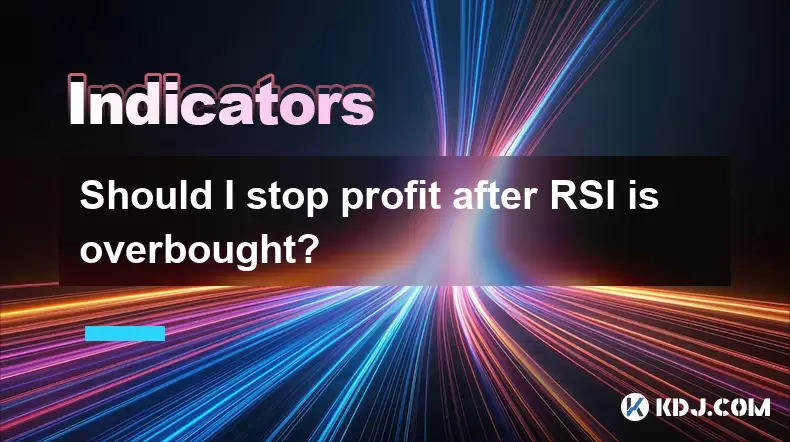
When it comes to trading cryptocurrencies, one of the key indicators many traders use is the Relative Strength Index (RSI). The RSI is a momentum oscillator that measures the speed and change of price movements. It's often used to identify overbought or oversold conditions in the market. The question of whether you should take profits after the RSI indicates an overbought condition is a nuanced one, and this article will explore various aspects of this decision.
Understanding the RSI and Overbought Conditions
The RSI is typically displayed as a line graph that oscillates between 0 and 100. An RSI reading above 70 is generally considered to indicate an overbought condition, while a reading below 30 suggests an oversold condition. The idea behind these thresholds is that when the RSI moves above 70, the asset may be overvalued and due for a price correction. Conversely, when it falls below 30, the asset may be undervalued and poised for a price increase.
The Rationale for Taking Profits When RSI is Overbought
The primary rationale for taking profits when the RSI indicates an overbought condition is based on the expectation of a potential price correction. If the RSI has moved above 70, it suggests that the asset has been rallying and may be due for a pullback. Traders who follow this strategy aim to sell their holdings before the price drops, thereby locking in their gains.
Considerations Before Taking Profits
While the RSI can be a useful tool, it's important not to rely solely on this indicator. Other factors such as market trends, news events, and broader economic indicators should also be considered. For instance, during a strong bull market, an asset's RSI may remain in overbought territory for extended periods without a significant correction. In such cases, selling solely based on the RSI might cause you to miss out on further gains.
Divergence and RSI
Another important aspect to consider is the concept of divergence. Divergence occurs when the price of an asset moves in the opposite direction of the RSI. For example, if the price of a cryptocurrency continues to rise while the RSI starts to decline, this could be a bearish divergence, signaling that the upward momentum is weakening. In such scenarios, taking profits might be more justified, even if the RSI is still above 70.
Combining RSI with Other Indicators
To make more informed decisions, many traders use the RSI in conjunction with other technical indicators. Combining the RSI with moving averages, Bollinger Bands, or the MACD can provide a more comprehensive view of the market. For instance, if the RSI indicates an overbought condition and the price is also above the upper Bollinger Band, this might reinforce the decision to take profits.
Practical Steps for Using RSI to Take Profits
If you decide to use the RSI to guide your profit-taking strategy, here are some practical steps you can follow:
- Monitor the RSI on your chosen trading platform: Ensure that your platform displays the RSI correctly and that you can set alerts for when it crosses the 70 threshold.
- Set a target price: Determine the price at which you would be comfortable selling your holdings. This could be based on resistance levels, previous highs, or other technical analysis.
- Place a sell order: Once the RSI moves above 70 and your target price is reached, you can place a sell order. You might choose to use a limit order to sell at your target price or a stop-loss order to sell if the price starts to drop.
- Review and adjust: After taking profits, review your strategy to see if it was effective. Adjust your approach based on the outcomes and any new information that becomes available.
The Role of Risk Management
Risk management is crucial when deciding whether to take profits based on the RSI. It's important to have a clear understanding of your risk tolerance and to set stop-loss orders to protect your capital. Even if the RSI suggests an overbought condition, unexpected market movements can still occur, and having a risk management plan in place can help mitigate potential losses.
Psychological Factors in Trading
Psychological factors also play a significant role in trading decisions. Fear of missing out (FOMO) and the desire to maximize gains can sometimes lead traders to hold onto assets longer than they should. Conversely, fear of losing gains can prompt premature selling. It's important to remain disciplined and stick to your trading strategy, even when emotions are running high.
Examples of RSI in Action
To illustrate how the RSI can be used in practice, let's look at a couple of examples. In early 2021, Bitcoin's RSI frequently moved above 70 during its bull run. Some traders who sold based on this indicator were able to lock in profits before subsequent corrections. However, others who held on saw even higher prices later. In contrast, during the 2018 bear market, the RSI often indicated overbought conditions before significant price drops. Traders who took profits during these periods were able to avoid larger losses.
Limitations of the RSI
While the RSI is a valuable tool, it has its limitations. It can remain in overbought or oversold territory for extended periods during strong trends. Additionally, the RSI can generate false signals, especially in choppy or sideways markets. Therefore, it's crucial to use the RSI as part of a broader trading strategy rather than relying on it exclusively.
Frequently Asked Questions
Q: Can the RSI be used effectively in all market conditions?
A: The RSI can be useful in various market conditions, but its effectiveness can vary. In strong trending markets, the RSI might remain in overbought or oversold territory for longer periods, potentially leading to false signals. In more volatile or choppy markets, the RSI can be more reliable, but it should always be used in conjunction with other indicators and market analysis.
Q: How often should I check the RSI for my trading decisions?
A: The frequency of checking the RSI depends on your trading style. Day traders might monitor the RSI continuously throughout the trading day, while swing traders might check it less frequently, perhaps daily or weekly. It's important to align your RSI monitoring with your overall trading strategy and time horizon.
Q: Is there a specific timeframe that works best for using the RSI?
A: The effectiveness of the RSI can vary depending on the timeframe you use. Shorter timeframes, such as 15-minute or hourly charts, can be useful for day traders looking for quick entry and exit points. Longer timeframes, such as daily or weekly charts, are often more suitable for swing traders or investors looking at broader trends. Experimenting with different timeframes can help you find what works best for your trading style.
Q: How can I avoid being whipsawed by the RSI?
A: Whipsawing, or being caught in a series of false signals, can be a challenge when using the RSI. To mitigate this, consider using longer timeframes, combining the RSI with other indicators, and waiting for confirmation signals before making trading decisions. Additionally, setting clear entry and exit rules can help you avoid being swayed by short-term fluctuations.
Disclaimer:info@kdj.com
The information provided is not trading advice. kdj.com does not assume any responsibility for any investments made based on the information provided in this article. Cryptocurrencies are highly volatile and it is highly recommended that you invest with caution after thorough research!
If you believe that the content used on this website infringes your copyright, please contact us immediately (info@kdj.com) and we will delete it promptly.
- Surging Crypto Market Helps HyperLiquid Whales Boost HYPE To New Highs
- 2025-06-05 19:20:13
- Digital Asset Investment Products See Weekly Inflows of $882 Million, Led by the U.S. and Bitcoin
- 2025-06-05 19:20:13
- DogWifhat (WIF) Performance
- 2025-06-05 19:15:13
- Meme Coin Pepe (PEPE) Pumps 81% in a Week, Can MIND of Pepe (MIND) Repeat the Success?
- 2025-06-05 19:15:13
- Scott Galloway Tears Into Donald Trump, Accusing the Ex-President of Using the Oval Office to Enrich Himself and His Family
- 2025-06-05 19:10:13
- HBAR price prediction: Can Hedera hit $1 during this crypto market bull run?
- 2025-06-05 19:10:13
Related knowledge
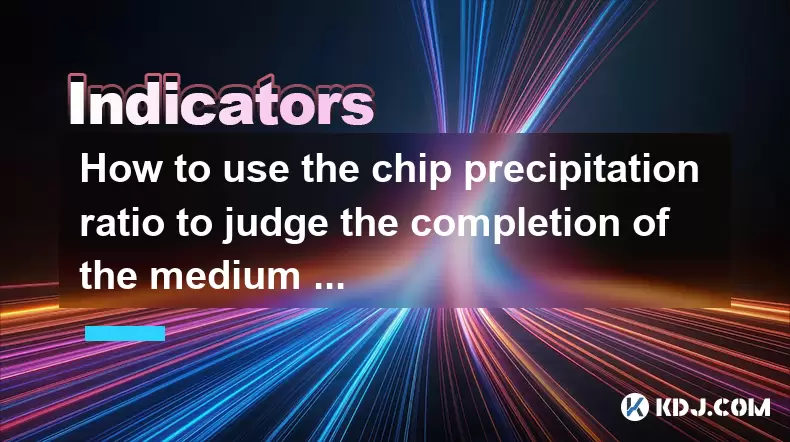
How to use the chip precipitation ratio to judge the completion of the medium and long-term bottom construction?
Jun 04,2025 at 03:36am
The chip precipitation ratio is a crucial metric used by investors to assess the accumulation of chips (or shares) at different price levels over time. This ratio helps in understanding the distribution of chips and can be a powerful tool for determining the completion of medium and long-term bottom construction in the cryptocurrency market. By analyzin...
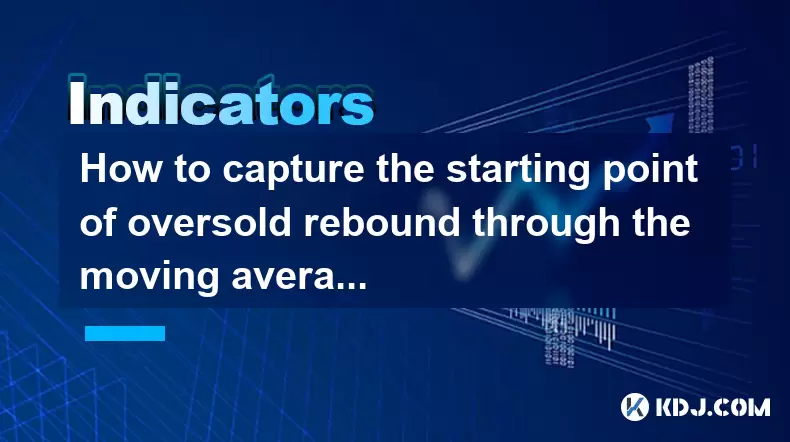
How to capture the starting point of oversold rebound through the moving average gravity reversal strategy?
Jun 04,2025 at 01:01pm
The moving average gravity reversal strategy is a sophisticated approach used by traders to identify potential entry points for buying cryptocurrencies when they are considered oversold. This strategy leverages the concept of moving averages to pinpoint moments when a cryptocurrency might be poised for a rebound. In this article, we will delve into the ...
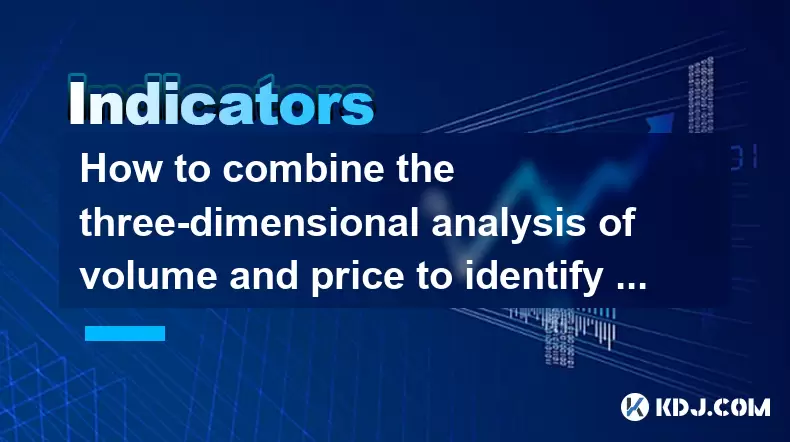
How to combine the three-dimensional analysis of volume and price to identify the golden buying point of breakthrough and retracement?
Jun 03,2025 at 11:42pm
In the dynamic world of cryptocurrencies, identifying the optimal buying points is crucial for maximizing profits and minimizing risks. One effective method to achieve this is by combining three-dimensional analysis of volume and price to pinpoint the golden buying points during breakouts and retracements. This article will delve into how to use this ap...
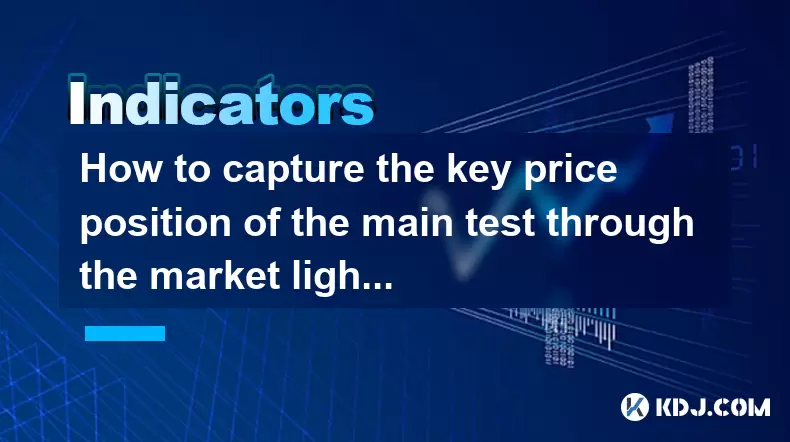
How to capture the key price position of the main test through the market lightning chart?
Jun 02,2025 at 06:07pm
Introduction to Market Lightning ChartThe market lightning chart is a powerful tool used by cryptocurrency traders to visualize price movements and identify key price positions. This chart type provides a detailed view of market activity, allowing traders to spot trends, reversals, and other significant price levels quickly. By understanding how to use ...
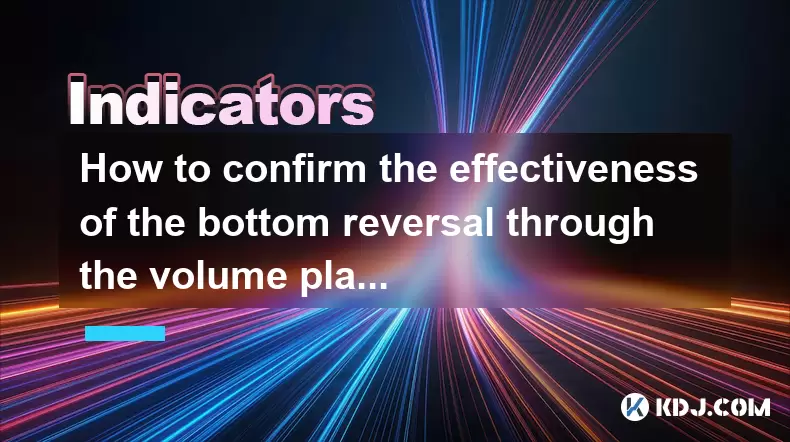
How to confirm the effectiveness of the bottom reversal through the volume platform breakthrough?
Jun 05,2025 at 04:21pm
In the volatile world of cryptocurrencies, identifying the bottom of a market cycle and confirming a reversal can be crucial for traders looking to maximize their returns. One effective method to confirm the effectiveness of a bottom reversal is through the analysis of volume platform breakthroughs. This article will delve into the intricacies of this m...
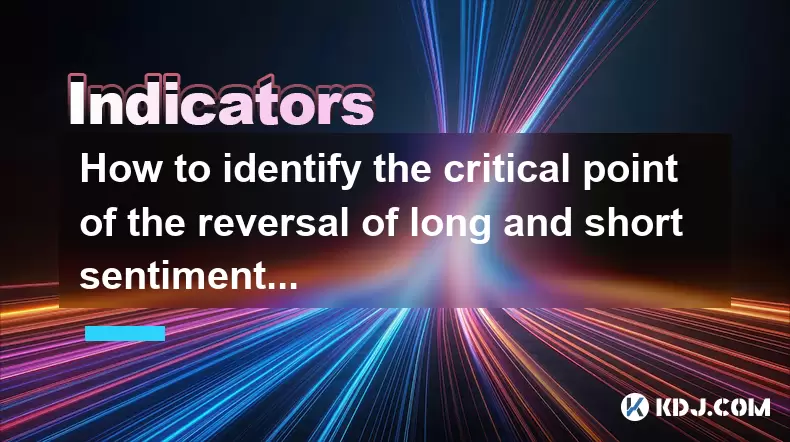
How to identify the critical point of the reversal of long and short sentiment through the K-line reverse package combination?
Jun 01,2025 at 03:36pm
In the world of cryptocurrency trading, understanding the sentiment of the market is crucial for making informed decisions. One effective method to gauge the potential reversal of long and short sentiment is through the analysis of K-line reverse package combinations. This technique involves studying specific patterns and formations within the K-line ch...

How to use the chip precipitation ratio to judge the completion of the medium and long-term bottom construction?
Jun 04,2025 at 03:36am
The chip precipitation ratio is a crucial metric used by investors to assess the accumulation of chips (or shares) at different price levels over time. This ratio helps in understanding the distribution of chips and can be a powerful tool for determining the completion of medium and long-term bottom construction in the cryptocurrency market. By analyzin...

How to capture the starting point of oversold rebound through the moving average gravity reversal strategy?
Jun 04,2025 at 01:01pm
The moving average gravity reversal strategy is a sophisticated approach used by traders to identify potential entry points for buying cryptocurrencies when they are considered oversold. This strategy leverages the concept of moving averages to pinpoint moments when a cryptocurrency might be poised for a rebound. In this article, we will delve into the ...

How to combine the three-dimensional analysis of volume and price to identify the golden buying point of breakthrough and retracement?
Jun 03,2025 at 11:42pm
In the dynamic world of cryptocurrencies, identifying the optimal buying points is crucial for maximizing profits and minimizing risks. One effective method to achieve this is by combining three-dimensional analysis of volume and price to pinpoint the golden buying points during breakouts and retracements. This article will delve into how to use this ap...

How to capture the key price position of the main test through the market lightning chart?
Jun 02,2025 at 06:07pm
Introduction to Market Lightning ChartThe market lightning chart is a powerful tool used by cryptocurrency traders to visualize price movements and identify key price positions. This chart type provides a detailed view of market activity, allowing traders to spot trends, reversals, and other significant price levels quickly. By understanding how to use ...

How to confirm the effectiveness of the bottom reversal through the volume platform breakthrough?
Jun 05,2025 at 04:21pm
In the volatile world of cryptocurrencies, identifying the bottom of a market cycle and confirming a reversal can be crucial for traders looking to maximize their returns. One effective method to confirm the effectiveness of a bottom reversal is through the analysis of volume platform breakthroughs. This article will delve into the intricacies of this m...

How to identify the critical point of the reversal of long and short sentiment through the K-line reverse package combination?
Jun 01,2025 at 03:36pm
In the world of cryptocurrency trading, understanding the sentiment of the market is crucial for making informed decisions. One effective method to gauge the potential reversal of long and short sentiment is through the analysis of K-line reverse package combinations. This technique involves studying specific patterns and formations within the K-line ch...
See all articles

























![HOW TO WITHDRAW WORLD COIN TO BINANCE / OKX USING WORLD CHAIN! (EASY GUIDE) [2025] HOW TO WITHDRAW WORLD COIN TO BINANCE / OKX USING WORLD CHAIN! (EASY GUIDE) [2025]](/uploads/2025/06/05/cryptocurrencies-news/videos/withdraw-coin-binance-okx-chain-easy-guide/684132dbc5c4d_image_500_375.webp)































































